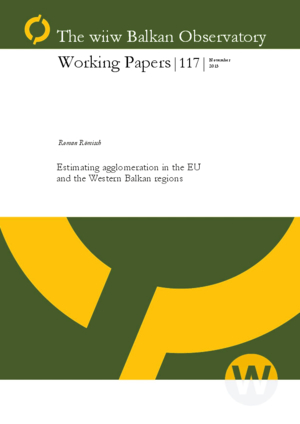Estimating agglomeration in the EU and the Western Balkan regions
Abstract
The paper develops a model to consistently estimate agglomeration and agglomeration economies in European NUTS3 regions. It is based on the empirical observation that the size of population across regions as well as of other economic variables tend to follow a Zipf distribution. Furthermore, the model is extended to capture agglomeration effects in traditional regional convergence estimations. Agglomeration is analysed for 25 European countries, including Macedonia and Serbia, and the years 2000 to 2012. Results indicate significant agglomeration effects on the level and growth of regional economic development, with agglomeration and agglomeration economies generally declining in the Western European countries and increasing the Central East and South East European countries.
Keywords: Zipf’s Law, agglomeration economies, Europe, Western Balkans
Countries covered: European Union, Western Balkans
Research Areas: Macroeconomic Analysis and Policy
